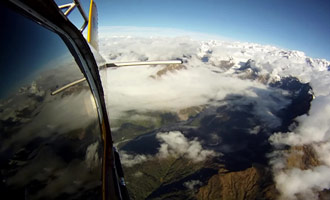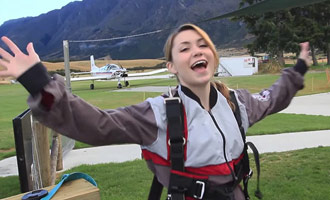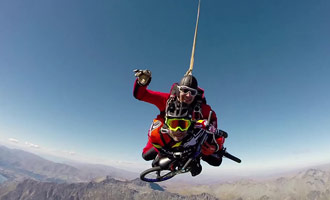
The Guide of Skydiving in New Zealand.
Please contact us and we will help you to organize your trip! It's free and without commitment.
- Read the post
- Details
- Advices
The Practical Guide of the Activity.
- 1Challenge Yourself With Skydiving!
- 2How to Organize a Parachute Jump?
- 3The D-Day Has Arrived!
- 4Free-Fall and Landing Sequences.
- 5The Best Skydiving Spots of New Zealand.
- 6Is Skydiving dangerous?
- 7What Souvenir Can You Bring of Your Free Fall?
Challenge Yourself With Skydiving!
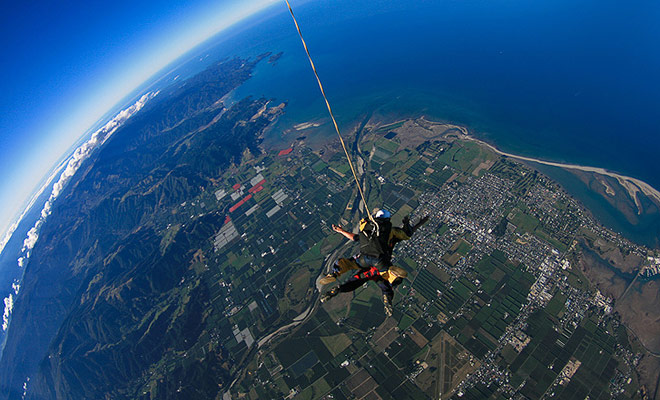
Your baptism of parachute jumping in New Zealand.
One day, you will get up and realize that life is short, and that it would be time to experience the exhilarating sensation of a free fall at 200 km / h. The idea will make its way in your mind, until the decision become irrevocable: you need to try skydiving!
And if you plan to jump from a plane, it is even better to do it above a dream landscape! You will join the club of travelers who had their parachute baptism in New Zealand. A very popular activity in a country full of extreme sports fanatics.
The best skydiving spots are on the South Island where the panoramas are the most spectacular. The most sought-after locations are above Queenstown, the the paradise beaches of Abel Tasman or the millennial glaciers like the Fox Glacier.
It is often advised to book a jump on the Internet without the option to cancel in order not to be able to step back on the D-day. This is actually a good tip, especially since online rates are often 10% lower than those charged on the spot. The activity being quite expensive, you will think twice before booking.
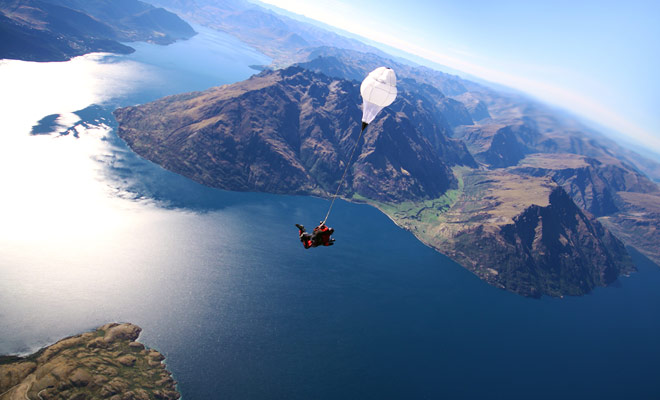
The price of a jump varies according to the altitude.
The average budget of a parachute jump is between $235 and $560 depending on the altitude. An exorbitant price, yet fully justified by the presence of a monitor who will jump in tandem with you, and will take care of the parachute opening and the landing process.
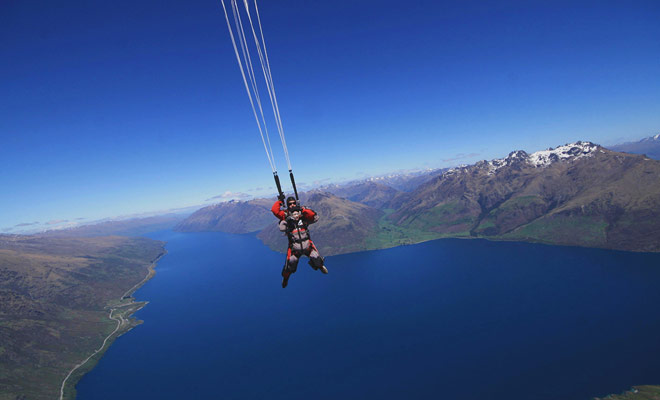
The duration of a jump is brief but the experience is intense.
I'm not trying to convince you to jump at all costs.
But I guess if the curiosity has led you on this page, it's to discover how to organize a parachute jump and enjoy a unique experience in New Zealand.
In addition to giving you detailed explanations on the duration of the free fall, or about the landing sequence (the sequence that most often worries beginners), I will review the best jump spots, and I will give you the price you can expect to pay.

A parachute jump organized by NZone Skydive in Queenstown.
A promotional video of Nzone Skydive QueenstownHow to Organize a Parachute Jump?
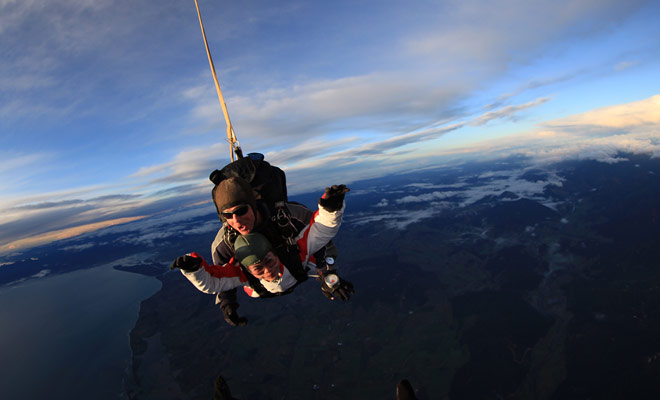
Skydiving is very popular in New Zealand.
Popular sport despite its high price, the parachute jump is open to people weighing less than 100 kg, aged of at least 15 years, and presenting no medical contraindications.
The free fall in itself will be brief, and it is not necessary to come very covered, because you will not have time to catch cold anyway.
A casual outfit (jeans, converse shoes...) is quite appropriate, but do not come in shorts or with a parka.
During the summer months, the temperature at 4000 m approaches 0 ° C and continues to descends progressively as the plane takes more altitude. The jump organizer will provide you with a well-tightened eye mask to resist the icy wind.
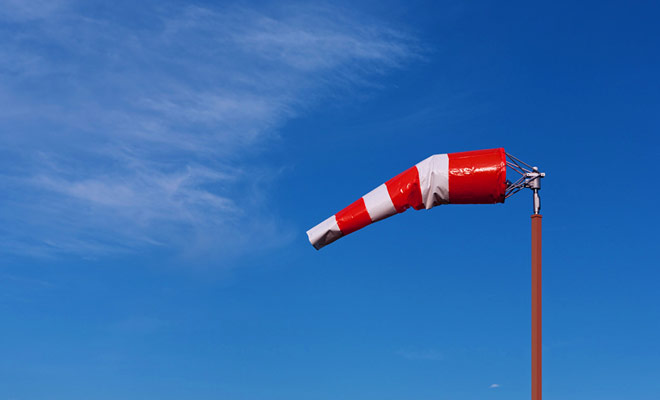
The weather and wind strength should be taken into account.
If you thought the hardest part was having the courage to jump, you were wrong. The worst scenario is to actually have to postpone the activity due to weather conditions. And in a country like New Zealand, where the weather conditions are often capricious, you sometimes have to be patient.
The sky must be clear, with low clouds and winds blowing at less than 40 km / h. Cancellations are always possible, and I recommend that you forecast an entire morning or afternoon for this activity. If weather is bad, you'll have to hope that a thinning will chase the rain that prohibits any parachute jump.
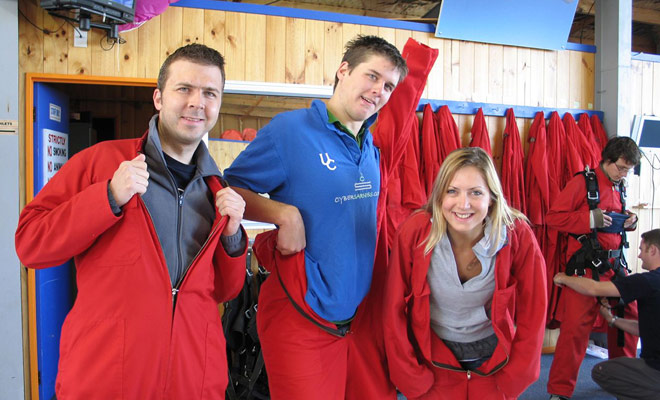
The organizer provides all the equipment to jump.
Of course, any skydiving company will fully reimburse its customers if a jump is to be canceled because of bad weather. There are, of course, many substitution activities, but the frustration of not being able to jump is usually considerable, especially if one had braved his fear to register in the first time.
Clear blue sky without clouds? You are free to continue reading this article with the full presentation of a parachute jump. But if you prefer to keep intact the pleasure of discovery, you can spend the next two chapters and go directly to the comparative study of skydiving companies.
The D-Day Has Arrived!
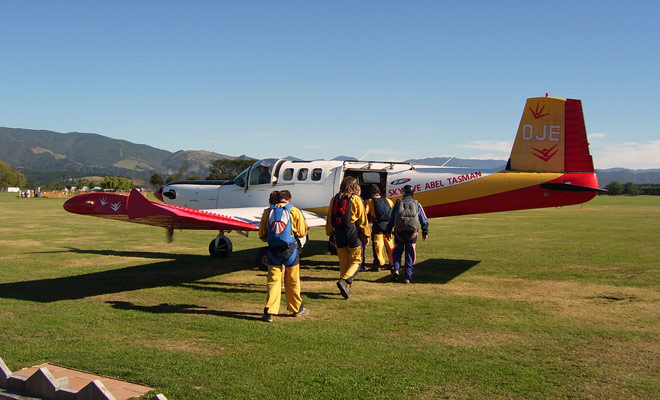
Once boarded in the plane it will be too late to retreat.
You begin to regret having announced your intention to everyone. This time, you cannot go back: the sky is cleared, and you take the direction of the nearest airport.
You will get to know your monitor before take-off. For about ten minutes, you will repeat together some details, and how to position your legs at the landing.
A reassuring rehearsal, where you will discover with relief that the instructor will jump with you in tandem, and will take charge not only the opening of the parachute but also the landing.
When the time comes, you'll just have to fold your legs and your monitor will cushion the shock for you.
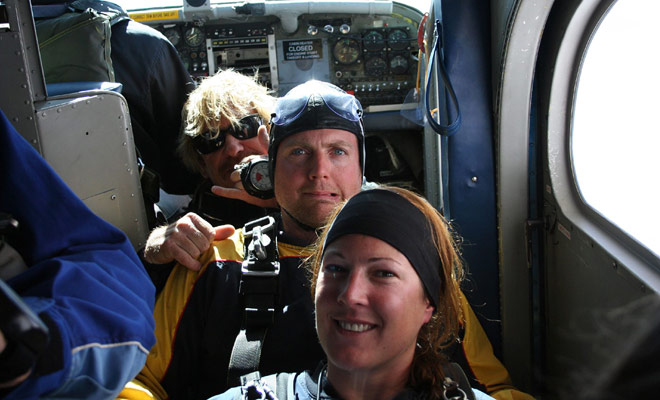
A mixture of excitement and fear appears little by little.
It's the easy part, and you just have to take a seat on the plane. The good mood of the participants is enough to relax the atmosphere, even if a mix of stress and excitement remains palpable.
After about fifteen minutes in flight, the preparations begin and you will find yourself strapped to your monitor.
At this point, nobody is kidding and the professionals review every detail and check all safety instructions.
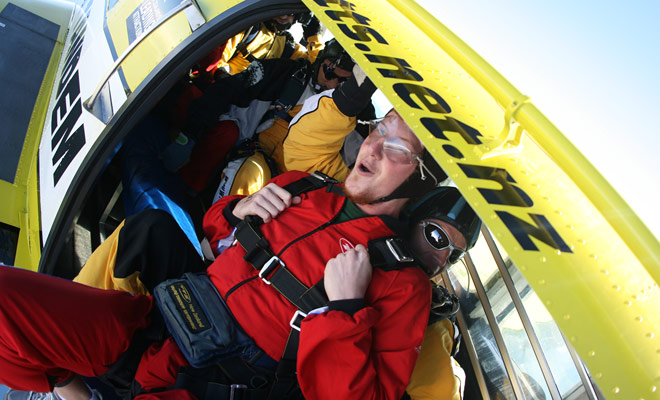
When the door opens, you do not feel dizzy.
The opening the door of an airplane in flight remains an experience that nothing can prepare you for. Once seated on the ledge, with the legs hanging in the void (spoiler warning) you will notice with surprise that you do not have any vertigo.
This is the main discovery of the parachute jump: you have not become a super hero, but the feeling of vertigo just does not apply to skydiving.
It is necessary to have your feet in contact with a solid ground to feel the dizziness, a phenomenon related to the inner ear, and that therefore does not apply in the air!
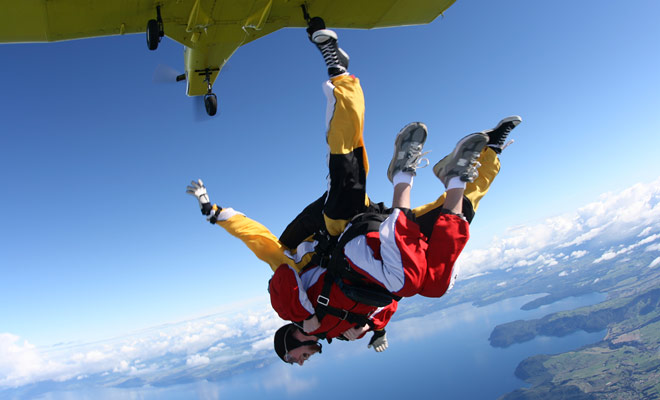
The first few seconds of the freefall are indescribable!
The great moment has finally arrived! You will jump with outstretched arms as you were taught before take-off. Experience is indescribable, and your imagination is not enough to prepare you for such a deluge of sensations.
Free-Fall and Landing Sequences.
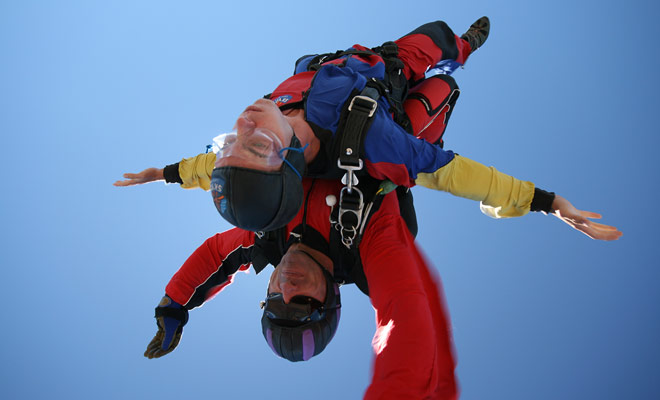
You'll have the sensation of flying for the first time in his life.
Second big surprise of the day (spoiler warning ...), you do not have the sensation to fall. This may seem evident, but you are not jumping into the "void", but into the air whose currents carry birds, planes and even beginner skydivers like you!
The wind that blows at more than 120 km / h at the exit of the plane cover your voice (or your screams). Immediately, the panorama reveals itself in all its splendor and constitutes a real shock: this is totally different than what you are used to seeing through the porthole of a plane!
For the beginners, the first moments are the most intense, with a sensation of powerful acceleration and fast horizontal spinning at 360°.
The first 300 meters are crossed in less than 10 seconds, then the speed stabilizes at 200 km / h according to an immutable physical law (whether you jump alone or in tandem does not change anything).
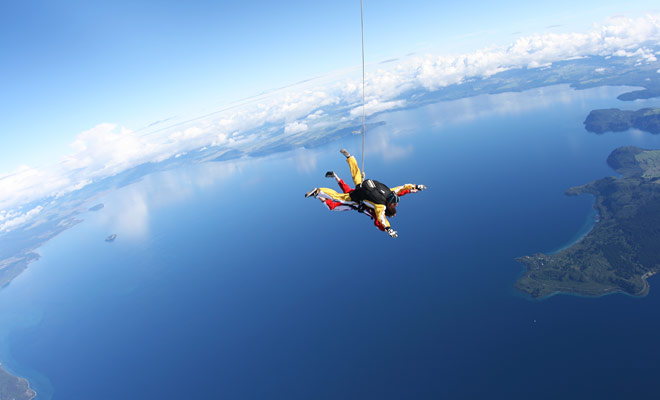
The free fall takes place at about 200 km / h!
Speed is not felt at all in the absence of attention to a fixed reference. Only passing through clouds help to realize how fast you are falling.
The last surprise of the day (spoiler warning), however predictable, arrives with the somewhat brutal opening of the parachute.
The deployment of the parachute puts an end to the deafening din of the free fall. You will hear yourself talking again and can exchange your impressions with the monitor.
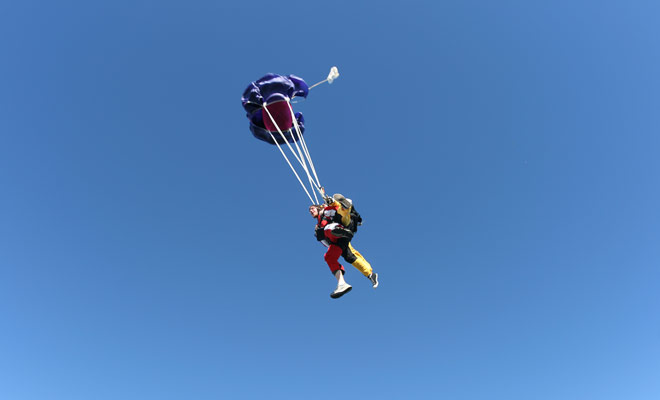
The opening of the parachute put an end to the uproar.
All you have to do is enjoy the peaceful descent, admiring the landscape from a totally new angle (the one of a bird). Your awakened dream does not end with the soft landing (you'll just lift your legs at the instructor's signal), and it will take you a long time to regain your spirits between two bursts of laughter.
The Best Skydiving Spots of New Zealand.

The parachute jump is expensive in New Zealand.
As you will realize, the budget for a parachute jump increases according to the altitude. Of course, the higher the jumping point, the longer the descent to the land is and the longer the free-falling sensation will be.
Your jump will take place at an altitude of between 7000 and 19500 feet (2100 to 5000 meters).
But as you will see, companies do not communicate much about the actual duration of a parachute jump.
In reality, a free fall lasts about 1 minute 25 seconds at 19,500 feet (the ceiling for tourist jumps) and only 20 seconds at 7000 feet (entry level).
After that, you can expect five to seven minutes of peaceful descent once the parachute is open.

The most beautiful jumping points are in Queenstown.
Figures that may seem very brief, but the intensity of the experience makes all the difference, and I have never heard anyone complaining about the duration.
Of course, the ideal solution is to jump to the highest possible altitude.
The rates charged by the companies are very similar. There is not, strictly speaking, a “good deal” to be achieved with one organizer instead of another. This only depends on the altitude, the location, and the budget that you wish to allocate to a skydiving experience in New Zealand.
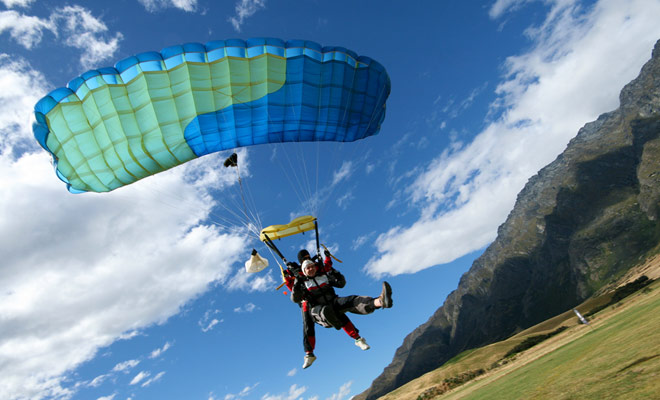
The experience lasts only a few minutes, but it does not matter!
Here are two tables that you can sort to bring out the company and the altitude adapted to your financial means. I have retained only the best companies, and the most spectacular jumping points.
The Best of the South Island
The altitude is measured in feet and the duration indicated is that of the free fall.
| Location | Company | Altitude | Length | Rate |
|---|---|---|---|---|
| Queenstown | NZone Skydive | 5000 | 00:05 | $299 |
| Queenstown | NZone Skydive | 9000 | 00:30 | $339 |
| Queenstown | NZone Skydive | 12000 | 00:40 | $439 |
| Glenorchy | Skydive Paradise | 15000 | 01:00 | $409 |
| Glenorchy | Skydive Paradise | 12000 | 00:40 | $335 |
| Franz Joseph | Skydive Franz | 12000 | 00:40 | $319 |
| Franz Joseph | Skydive Franz | 15000 | 01:00 | $419 |
| Franz Joseph | Skydive Franz | 18000 | 01:15 | $559 |
| Fox Glacier | Skydive Fox Glacier | 9000 | 00:30 | $249 |
| Fox Glacier | Skydive Fox Glacier | 12000 | 00:40 | $299 |
| Fox Glacier | Skydive Fox Glacier | 16000 | 01:05 | $399 |
| Motueka | Abel Tasman Skydive | 9000 | 00:30 | $249 |
| Motueka | Abel Tasman Skydive | 13000 | 00:45 | $299 |
| Motueka | Abel Tasman Skydive | 16500 | 01:05 | $339 |
| Wanaka | Abel Tasman Skydive | 15000 | 01:00 | $429 |
| Wanaka | Abel Tasman Skydive | 12000 | 00:40 | $329 |
| Christchurch | Skydiving Kiwis | 6000 | 00:10 | $235 |
| Christchurch | Skydiving Kiwis | 9000 | 00:30 | 285 $ |
| Christchurch | Skydiving Kiwis | 12000 | 00:40 | $335 |
| Christchurch | Blueskies | 13000 | 00:45 | $325 |
| Christchurch | Blueskies | 7500 | 00:20 | $275 |
The Best of the North Island
| Location | Company | Altitude | Length | Rate |
|---|---|---|---|---|
| Taupo | Skydive Taupo | 10000 | 00:30 | $239 |
| Taupo | Skydive Taupo | 12000 | 00:40 | $249 |
| Taupo | Skydive Taupo | 15000 | 01:00 | $339 |
| Tauranga | Tauranga Skydiving | 8000 | 00:20 | $285 |
| Tauranga | Tauranga Skydiving | 10000 | 00:30 | $325 |
| Tauranga | Tauranga Skydiving | 12000 | 00:40 | $375 |
| Taranaki | Ballistic Skydive | 10000 | 00:30 | $335 |
| Taranaki | Ballistic Skydive | 12000 | 00:40 | $380 |
| Auckland | Skydive Auckland | 9000 | 00:30 | $295 |
| Auckland | Skydive Auckland | 13000 | 00:45 | 325 $ |
| Auckland | Skydive Auckland | 16500 | 01:10 | $425 |
| Kerikeri | Skydive Zone | 16000 | 01:05 | $399 |
| Kerikeri | Skydive Zone | 12000 | 00:40 | $329 |
| Kerikeri | Skydive Zone | 9000 | 00:30 | $299 |
Is Skydiving dangerous?
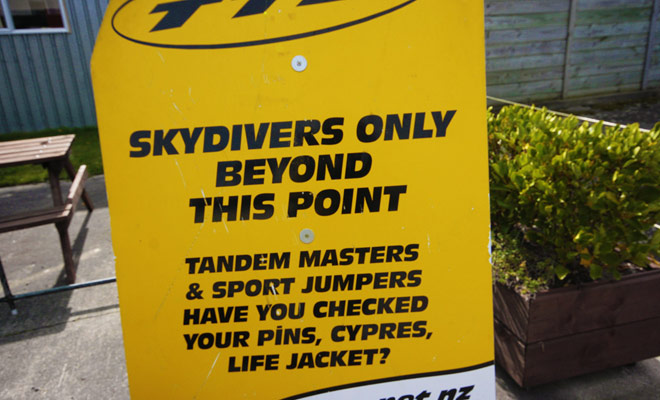
You must ask your doctor if you can practice parachute jump.
The organizer will, of course, question you about your state of health, and you will sign a waiver. It is usually enough to be in good physical condition. Do not forget to mention any heart problems, because your heart will beat a top speed most of the time..
Note that some skydiving companies may require a medical certificate. In this case, you will be notified when booking the jump. You should ask this precious sesame to your doctor before traveling to New Zealand, or you can just say goodbye to any improvised jump on location.
With a mortality rate of 0.6 every 10,000 jumps, you take more risks by driving your car every day to go to the office.
However, skydiving is classified as an extreme sport: a somewhat blurred notion, but reflecting the absence of any right to error.
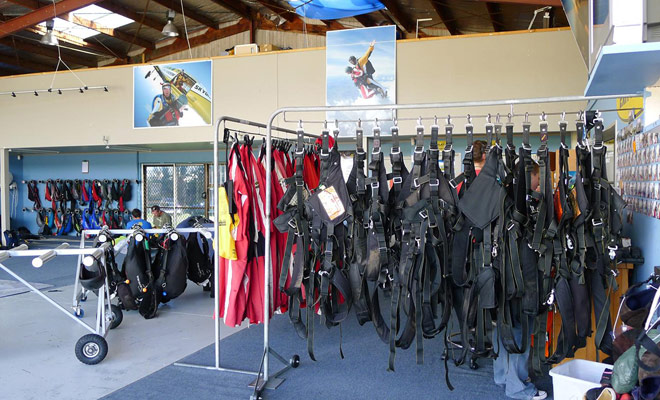
The equipment used is subject to very strict controls.
As for injuries, the number is higher but still insignificant, with a wound every 1000 jumps.
There is nothing to worry about, especially as these are mainly incidents related to risky behavior (imperfect landing during an individual jump) and the parachute is hardly ever questioned.
I insist that during a baptism in tandem, you will not be in charge of the opening of the parachute or the landing.
Steps that will be fully managed by the monitor, harnessed in your back by four attachment points.
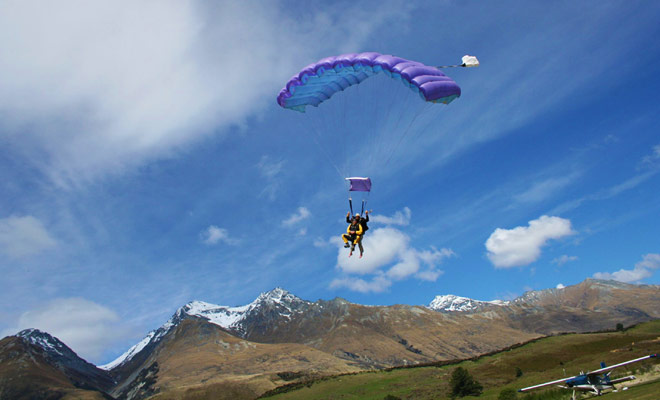
There is no difficulty in the tandem jump.
Your role is essential to be a spectator who screams during the free fall with tears in his eyes because of the beauty of the landscape.
Boarding in the plane and bending your knees during the landing part is all you are asked to do. So, there is really no reason to have a sleepless night the day before.
Your fear is still not yet dissipated? Know that each monitor has thousands of jumps to his credit.
For these skydiving certified experts (it requires a diploma to practice), safety remains the top priority: the slightest problem with the equipment, the slightest doubt and the jump will be canceled immediately.
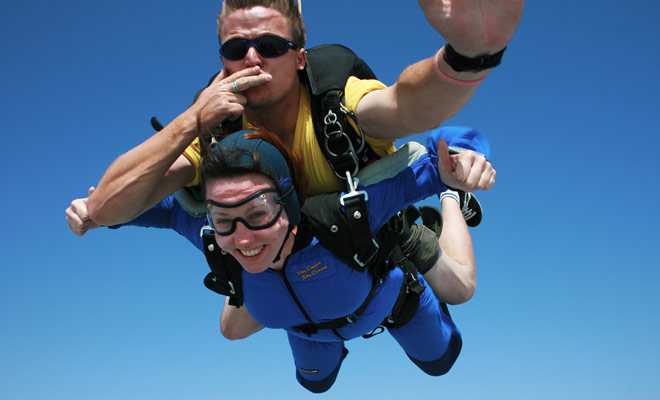
The monitor deal with the entire maneuver.
Some companies totalize more than 250,000 jumps in tandem!
Each parachute is used for a maximum of 2000 jumps and is subject to systematic control. For the great paranoiacs, I recall that you will always jump with a second emergency parachute, equipped with an automatic opening system.
In reality, the only real problem with the parachute jumping is that it can give nausea to people who are easily affected by motion sickness.
Effective medication exists, such as Cocculin, Marcalm or Nausicalm. Talk to your doctor before traveling.
What Souvenir Can You Bring of Your Free Fall?

The budget for a parachute jump is substantial.
The first thing most people desire after a parachute jump is to try again. Everyone would probably do so if skydiving was not so expensive ... The experience deserves to sacrifice an important part of your holiday budget, but there is a solution to extend your memory of the free fall.
Skydiving will remain forever engraved in your memory, but it would be a shame not to share this memory with your beloved ones. Do not imagine carrying your own camera, its use is strictly forbidden. Anyway, do you really want to sacrifice your precious seconds of free-fall by looking through a camera?
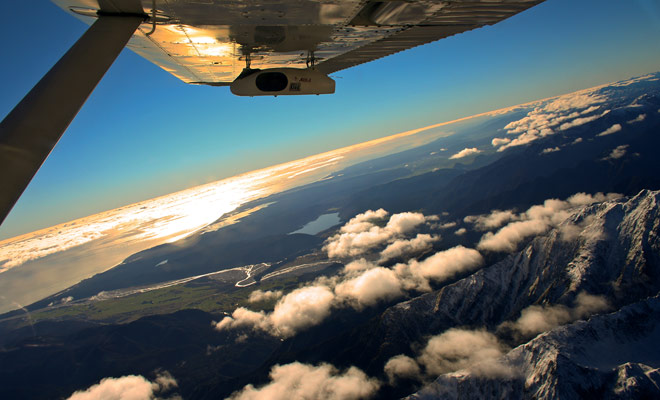
Embedded cameras capture your live jump.
The skydiving companies are well aware that photos and videos of the jump are easy to sell. The techniques of realization vary from one organizer to another. The ideal is to have a cameraman who jumps at the same time as you and film everything from the start to the end. For small budgets, the tandem monitor can film with a GoPro camera but you will only get close-up of yourself.

You will be able to show your parachute jump to your friends!
There are several key moments that deserve to be immortalized.
The climb on the plane (where one can observe you pretend not being afraid), the free fall and the descent in parachute until the landing are great classics.
So is it necessary to subscribe to this option? If the quality of the photos is not always excellent (speed and abrupt movements are not the best allies of the photographer), however, the GoPro video, thanks to all the progress accomplished in past years, is fantastic.
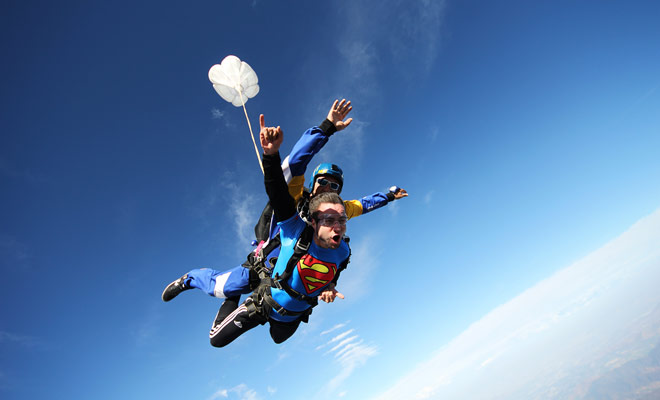
Become a superman in New Zealand.
Plan about $100 for pictures, $120 to $140 for videos, and about $170 for a photo + video combo.
Excessive? Probably, but if you are planning only one jump in your life, it is worth considering despite the short video length (5-7 minutes on average). As for the certificate of jump, with no other value than sentimental, I advise you to replace it advantageously by a beer tour at the pub after your exploit.
I leave you now with our friend Ben. The Kiwis (as everyone knows) have no wings, but this does not prevent them from practicing skydiving.
Ben will give you some practical tips and answers to all your questions about skydiving in New Zealand. I wish you all the courage you need and do not forget to share your photos with us!


Questions & Answers.

What can I do for you? In my humble opinion, the parachute jump is much less scary than bungee jumping. If you hesitate between the two, do not hesitate to ask me your questions!
- All topics ... 4 answers in total
- Booking a Sky Diving 2 answers
- Safety Instructions 2 answers
Booking a Sky Diving
- Can we jump as a couple?
As part of a parachute jump baptism, each participant is attached to a monitor. You will not be able to jump in tandem with anyone else, sorry!
- Can we board the plane without jumping?
This is impossible, because in an airplane where it is planned to open a door during a flight, each passenger must be equipped with a parachute (it is the law). If your partner wishes to accompany you, he will also have to jump!
Safety Instructions
- What if my parachute doesn’t hoppen work?
Severe accidents are very rare since twenty years. The parachute is rarely defective, and it is on the side of the non-respect of the instructions of safety that one must seek the reason of an accident. To my knowledge, there has never been a serious accident in a tandem tourist jump.
- Can we wear glasses / lenses for a parachute jump?
There is no contraindication for wearing glasses (or lenses) during a parachute jump. You will wear a mask to allow you to keep your eyes open during the free-fall.

